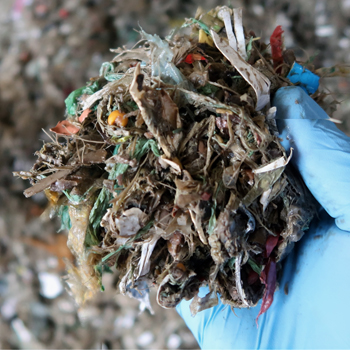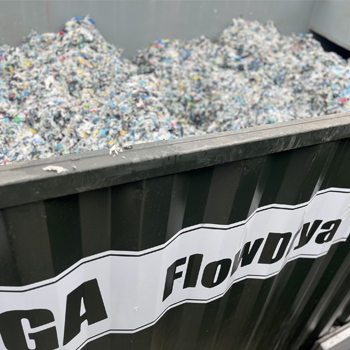Data and research referred to in this article was sourced from the independent 2022 article, entitled, ‘Evaluation of VOCs Emitted from Biomass Combustion in a Small CHP Plant: Difference between Dry and Wet Poplar Woodchips’, written by Enrico Paris, Monica Carnevale, Beatrice Vincenti, Adriano Palma, Ettore Guerriero, Domenico Borello and Francesco Gallucci.
Why Go ‘Green’?
With woodchip being used more abundantly as an alternative fuel, it is even more important for businesses to understand the importance of drying and how it can reduce the, often underappreciated, Volatile Organic Compounds (VOCs) emitted. While the drive towards more sustainable energy sources has a valid purpose, combustion of high moisture woodchip feedstock causes significant and complex emissions that effect both human and environmental health.
VOC emissions need to be carefully considered. Learn more below.

Reduce Emissions Through Drying Woodchip
For clarity, the academic source referenced in this article refers to results based on 43.3% and 15% moisture content ‘poplar’.
As our academic resource states, despite the ease of woodchip fuel production, biomass combustion can lead to a variety of macro/micro/VOC and ash pollutants. Results from studies indicate that in order to control and limit these emissions, the ‘physical characteristics’ of biomass need to be addressed. Drying biomass is one of the most effective ways emission-reduction can be achieved. Drying increases the efficiency of energy production and energy content of biomass feedstock, and also reduces any associated VOCs and ash emissions.
The table below, adapted from the academic source, evidences the importance of drying wood for energy production. Testing wet and dry poplar species to the appropriate measurement parameters with thermal desorption systems and combustion tests, this ‘principle component analysis’ determines that as the moisture content reduces, not only does calorific value increase, but the amount of VOCs and ‘harmful emissions’ also significantly decrease.

Through our research at Stronga, together with the results above, we can confidently attribute higher woodchip fuel moisture content with harmful emissions, lower combustion quality and lower energy efficiency (calorific value).
Environmental Impact: The ‘Troposphere’
Burning wet woody biomass not only contributes to the ozone-depleting ‘greenhouse gas’ effect, certain pollutant emissions are also responsible for development of the tropospheric ozone layer - a man-made layer formed from VOC emissions. This is visualised in the image below. Reducing VOC emissions through drying woodchips, using the FlowDrya, prior to combustion, is one small way businesses can contribute towards improved environmental health and prosperity.

Unlock Energy Potential Through Drying Woodchips
Not only does drying woodchip improve storage stability while reducing transportation costs, it also increases the caloric value of biomass considerably by promoting higher combustion quality. Incomplete combustion largely occurs as a result of burning wet biomass which increases the amount of ‘unburnt compounds’, as well as the associated harmful ‘emission compounds’ derived from high moisture content feedstock.
Research concludes that using wet woodchip (poplar species) also reduces the heating value and content of the potential available energy. Moisture causes more ‘thermal stresses and less homogenous combustion’, reducing quantity and quality of energy outputs.

‘Drying Woodchip Should be a Priority’
Using high moisture content woodchip fuel increases the risks of boiler faults while also causing ignition issues and blockages. To reduce boiler maintenance costs, increase energy value and reduce atmospheric pollution, drying biomass prior to combustion should be a priority.
Stronga have found that customers using FlowDrya equipment to dry woody feedstock for energy production, including pyrolysis and gasification, have unlocked full energy potential and are able to produce energy in a more stable process. Data in our academic source confirms that dry biomass is able to generate 35% more energy under the parameters tested. The research shows that ‘dry poplar generates heat of 163.29J compared to 121.36J by wet poplar’.
The chart below refers to results based on 43.3% wet and 15% dry moisture content ‘poplar’.

Drying Solutions Solved with Stronga
The evidence is conclusive. Using woody biomass with high moisture content has a direct and negative impact on energy production and the environment. Stronga’s FlowDrya system represents the most compact, scalable and efficient drying solution available on the market, especially for woodchips. The added benefit of FlowDrya compared to similar drying solution is its ability to accept various forms of heat from different sources, including residual heat from other on-site processes.
Stronga’s research indicates that drying woodchip constitutes one of the most simple and direct approaches to reducing harmful emissions, improving ‘biomass characteristics’ and ultimately, output energy production. FlowDrya comfortably delivers these goals, drying woodchips effectively to the required, low moisture parameters.

A short summary of FlowDrya benefits:
- FlowDrya is fully assembled and pre-commissioned at the Stronga factory. The monocoque design, allows for quick on-site installation which ensures woodchip drying can begin immediately, without causing costly delays to projects.
- Although FlowDrya has a simple design, it is robust and built to last. FlowDrya combines simplicity with reliability, ensuring smooth operations with minimal maintenance.
- FlowDrya operates a ‘stop-start’ basis which reduces component wear by approximately 4X; this extends the service life of the equipment whilst maintaining operating efficiency and productivity.
- FlowDrya has a huge, pre-drying hopper which reduces expensive labour requirements.
- FlowDrya’s ‘PulseWave™’ agitation system continuously mixes woodchip along the drying bed, leading to uniformity of dry output moisture content while ensuring high combustion potential.
- FlowDrya uses low temperature, in-direct air to dry woodchip, reducing any fire risks associated with biomass drying.

In our view, it is easier to dry woodchip feedstock than it is to clean the air post-combustion with scrubbers and ceramic filters. To reduce energy losses and discuss the positive influence of drying on energy production, caloric value and reduced production of harmful VOCs emission – get in contact with our team today at info@stronga.co.uk
Bibliography:
Paris E, Carnevale M, Vincenti B, Palma A, Guerriero E, Borello D, Gallucci F. Evaluation of VOCs Emitted from Biomass Combustion in a Small CHP Plant: Difference between Dry and Wet Poplar Woodchips. Molecules JOURNAL. 2022 Jan 31;27(3):955. doi: 10.3390/molecules27030955. PMID: 35164222; PMCID: PMC8839548. https://www.ncbi.nlm.nih.gov/pmc/articles/PMC8839548/
Licensee MDPI, Basel, Switzerland. This article is an open access article distributed under the terms and conditions of the Creative Commons Attribution (CC BY) license (https://creativecommons.org/licenses/by/4.0/).



Share this post